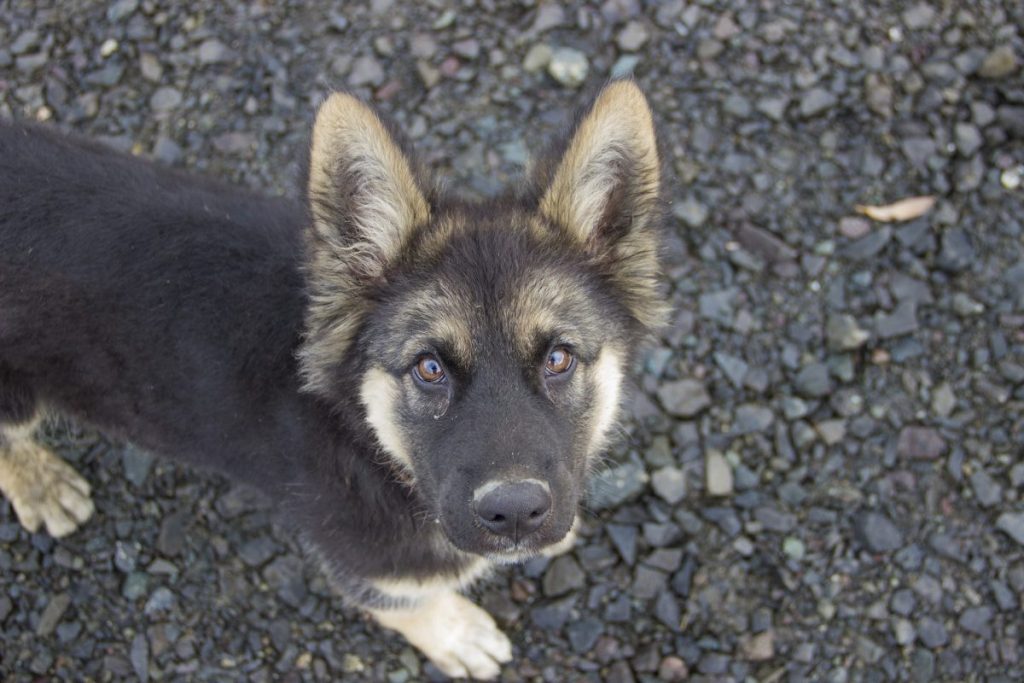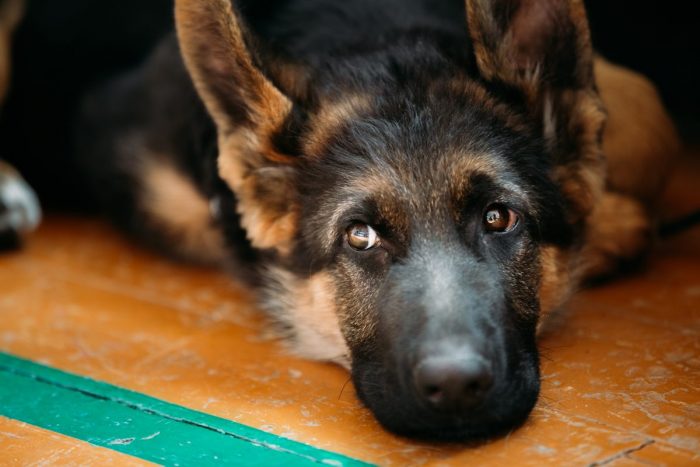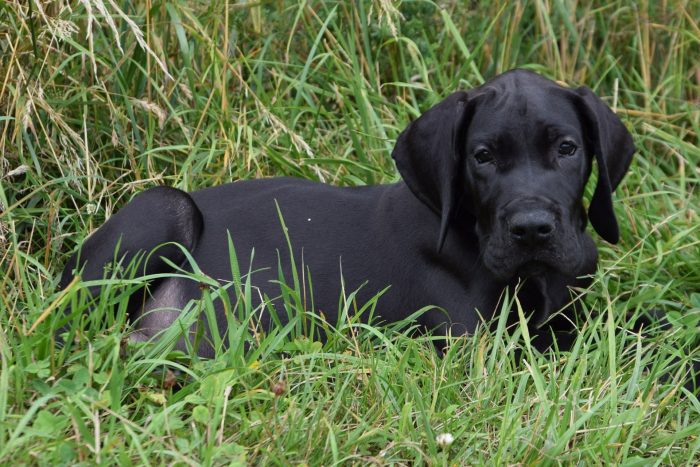Panosteitis, or hypertrophic osteodystrophy (HOD), is a bone disease that most often affects the legs of young dogs that are four to eighteen months old.
Often referred to as ‘puppy growing pains’, panosteitis has been known to manifest in dogs as young as 2 months and as old as 5 years, although it’s not as common in older dogs.
The disease typically attacks the long bones of the front and hind legs, but can sometimes attack the feet and pelvis as well, causing major inflammation and pain.
The disease can occur in any size dog and even cats, but is most often found in medium-to-large breeds like Great Danes, Rottweillers, Doberman Pinschers, Retrievers, Basset Hounds, and German Shepherds, with German Shepherds possessing the highest level of risk. Even middle-aged German Shepherds can sometimes suffer from panosteitis.
Symptoms of Panosteitis in Dogs
Painful inflammation makes it difficult for a dog with panosteitis to move around freely. Lameness and limping are the most prominent indicators, especially if the onset is sudden with no obvious injury or trauma.
Your dog may also show signs of pain if you apply pressure to the limb, and could be reluctant to go outside or walk or play. Lethargy, weight loss, and anorexia may also be seen in dogs with panosteitis.
Symptoms can persist for 2-3 weeks at a time and sometimes even longer, with the pain and inflammation moving from one leg to another and varying in its severity. The nature of panosteitis is cyclical, with periods of severe pain, and periods of lessened pain.
Puppies suffering from panosteitis may also experience an elevated white blood cell count, and/or fever and tonsillitis. Self-limiting behavior can lead to atrophy of the muscles, and in especially severe cases, where pain isn’t relieved and therapies aren’t working, euthanasia may sometimes be recommended.
Fortunately, with proper treatment and early detection, most dogs will find relief from the pain and inflammation and over time, they will regain their ability to move and play normally.
Causes of Panosteitis
There are currently no known causes of panosteitis. However, there are quite a few theories. Some believe that nutrition plays a role, while others believe there are viral factors and genetic components.
It was once thought that a bacterial infection could be the cause, but studies couldn’t pinpoint a bacterial culprit, nor does the disease respond well to antibiotics.
The most likely theory at this point is that nutrition, genetics, and virility all have an effect on a dog’s ability to develop this condition. Other orthopedic diseases are sometimes paired with this condition, but don’t seem to be the cause of it.
Risk Factors for Panosteitis in Dogs
Although panosteitis can manifest in many large breed dogs, it appears that German Shepherds are at the biggest risk for the condition. Other risk factors for panosteitis include size, excessive calcium supplementation, and rapid weight gain.
Diagnosis of Panosteitis in Puppies
Your vet will start with a full physical exam and patient history. They will want to rule out Lyme disease and OCD (osteochondritis disecans) as both are noted by limping and lameness without exhibiting any evidence of trauma or injury, just like panosteitis.
A blood test can help detect Lyme disease antibodies or elevated white blood counts. Your vet also might take a bone x-ray of the affected areas in order to reach an accurate diagnosis.
Panosteitis Treatment
Your pup’s condition can be best managed with plenty of rest. Even during periods where the pain is reduced, strenuous exercise should be avoided, though light exercise can be beneficial.
Though there aren’t specific treatment protocols or medications for panosteitis, NSAIDs are usually used to treat the inflammation, and antibiotics are only given if there is also an infection present.
Steroids can potentially have negative long-term effects and should be avoided, if possible, unless the pain is too severe and other drugs and treatment options aren’t working. A healthy diet is highly recommended, and sometimes supplements can be useful in managing the symptoms of this disease.
Ultimately panosteitis will run its course and resolve itself, and once it’s gone it rarely reoccurs or requires additional treatment. However, if it lasts longer than 2-5 months, or the medications given for treatment don’t appear to be working, a second visit to your vet may be in order.






